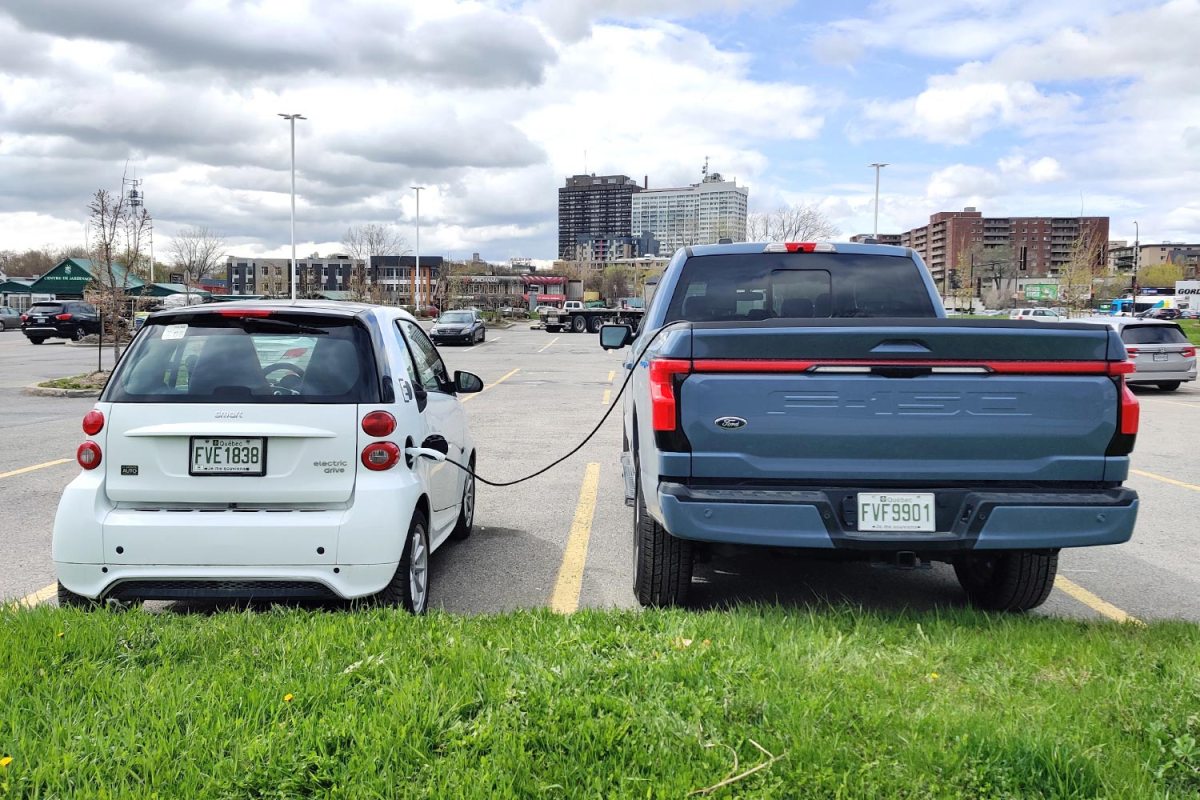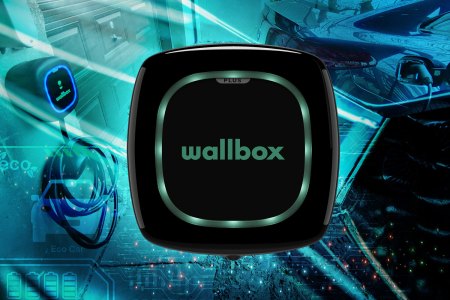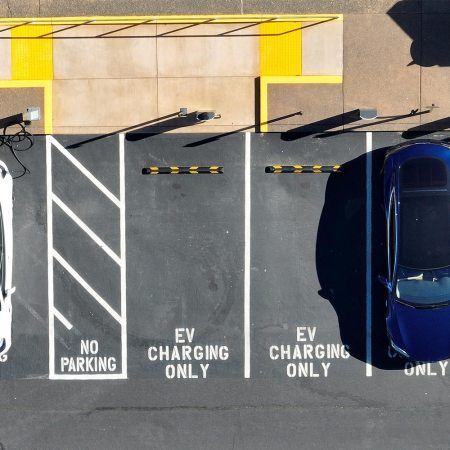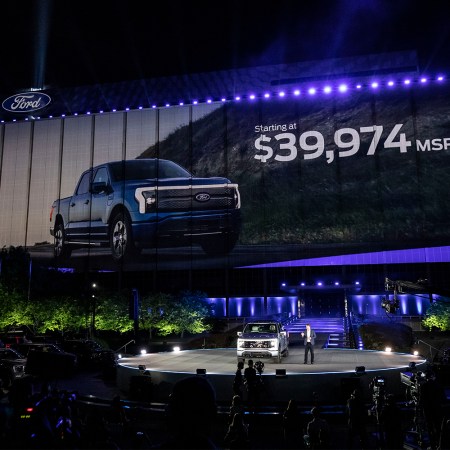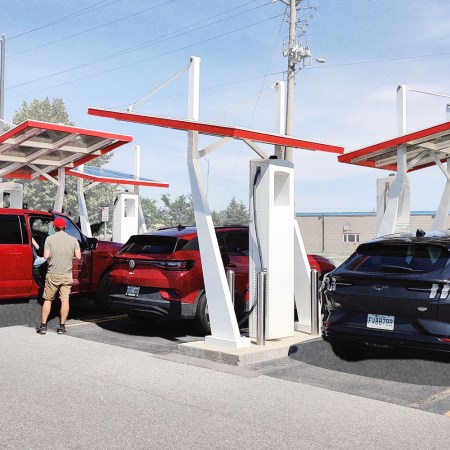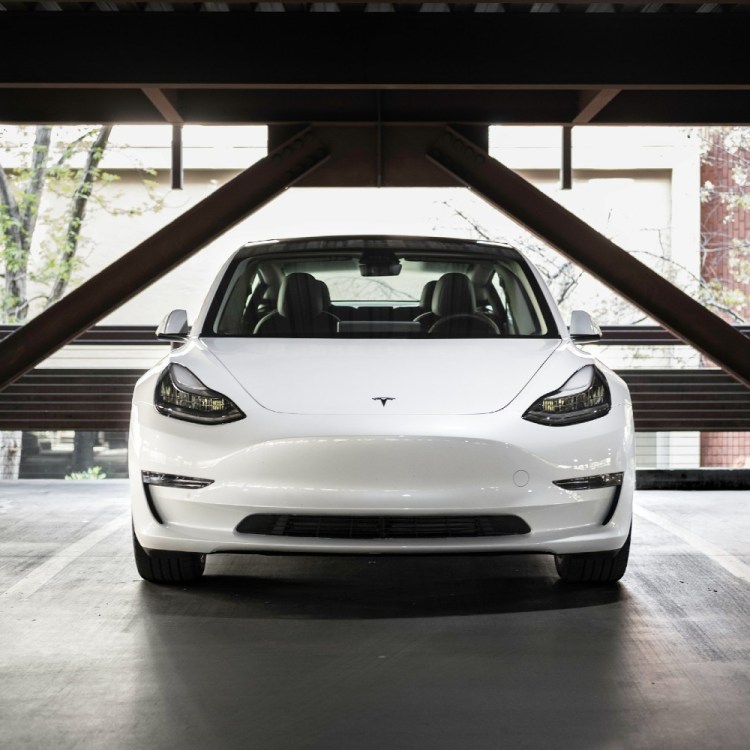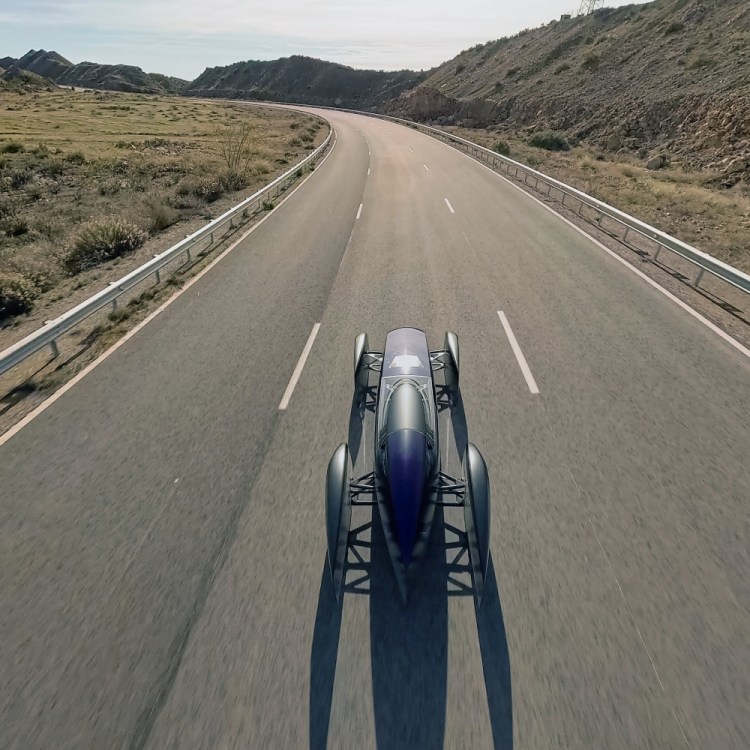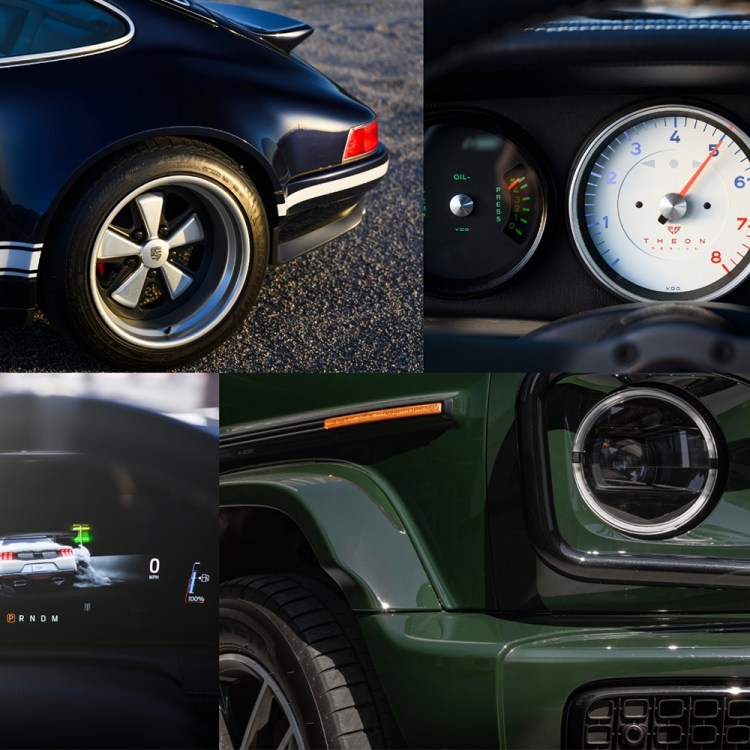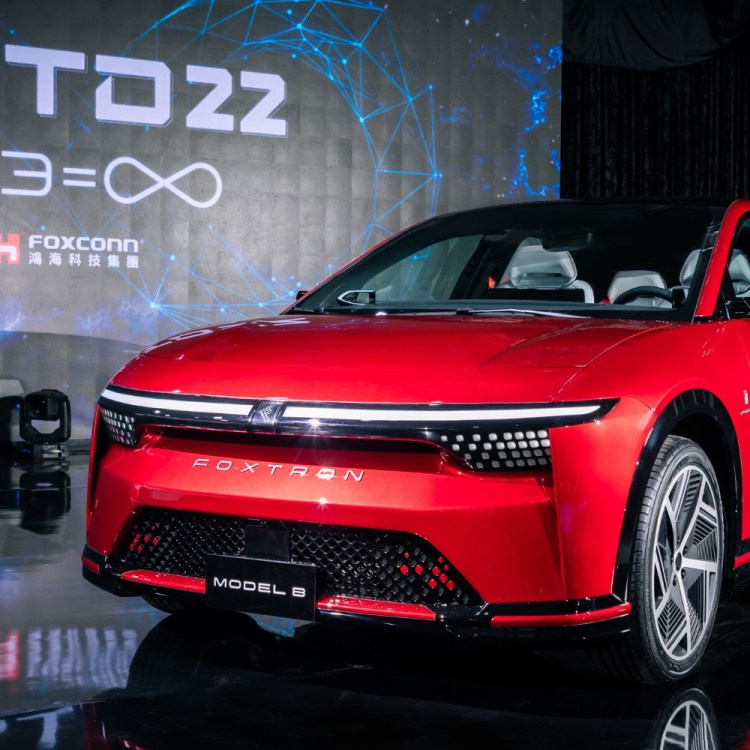The Ford F-150 Lightning has been a massive success for the Blue Oval, combining its most popular line of full-size trucks with the brand’s aggressive electrification strategy. Of course, the first battery-powered pickup on the market needs to do more than just handle the daily commute, which is why Ford has stuffed the Lightning with a number of additional features intended to satisfy customers putting the vehicle to work on a regular basis.
Chief among these is the truck’s Pro Power Onboard system. Originally found in the F-150 Hybrid, the more powerful version here offers access to the Lightning’s prodigious battery pack outside of a locomotive context, making up to 9.6 kW of electricity available through a group of outlets found in the cargo bed and frunk. Ford suggests using these plugs to tackle a wide range of contractor-style tasks, such as running power saws, lighting rigs or air compressors, and even advertises the ability for a fully-charged Lightning to tackle the entire electrical needs of a construction site over the course of a long weekend.
With that much energy available (and a 240-volt outlet that can tap into a full 7.2 kW at once), the Ford F-150 Lightning is by far the most talented of the current crop of EVs at serving as a rolling rescue unit for seriously-depleted comrades. Bi-directional charging, which makes possible an umbilical connection between one electric vehicle’s battery and another (known as vehicle-to-vehicle charging), is one of the Lightning’s most vaunted features. You can thank the enormous storage capacity of the truck’s own power pack, backed by energy discharge speeds that rival those of a standard Level 2 charger.
I decided to see just how easy it is to siphon some electrons from the Lightning and revive the state of charge on one of the first mass-market EVs sold in North America. It turns out almost everything I needed to get the job done was already provided by Ford right from the factory, making the overall experience a lot simpler than, say, trying to find a functional Electrify America station.

Ford F-150 Lightning vs. Smart Fortwo
There’s something perversely poetic about parking one of the smallest EVs ever built alongside one the current market’s true monsters, an image that evokes a tiny remora swimming alongside a mighty great white shark in a bid to snap up whatever scraps escape its massive jaws. In this case, however, the symbiotic relationship was a whole lot more cooperative than parasitic, as the Lightning was freely giving up sustenance to the first-generation Smart Fortwo Electric Drive I borrowed from a friend for the afternoon.
The tale of the tape confirms the leviathan-like visual mismatch between these two all-electric autos. The tiny Smart checks in with a curb weight of just over 2,000 pounds and a battery that was rated at 17.6 kWh when new, with years of use having reduced its range from an original 60 miles or so of travel per charge to roughly three quarters that figure. The Platinum trim Lightning serving as the donor, on the other hand, features a 131-kWh extended range battery that weighs nearly as much as the Smart car itself, giving it almost five times the range of the German ultra-mini.
Everything You’ve Wanted to Know About Installing an EV Charger in Your Home
Is it expensive? Safe? Convenient? Here’s what I learned after hooking up the Pulsar Plus from Wallbox.As charging situations go, the Lightning-to-Smart pipeline works largely in the Ford’s favor, at least on paper. Given that the electric Fortwo’s power pack is roughly 13% the size of the battery in the pickup, even a full top-up would hardly put a dent in the big bruiser’s energy levels. I decided to run the experiment for a full hour — a reasonable amount of time to spend on a roadside rescue — to see how much juice the Smart could suck down from its savior’s generous electrical endowment.
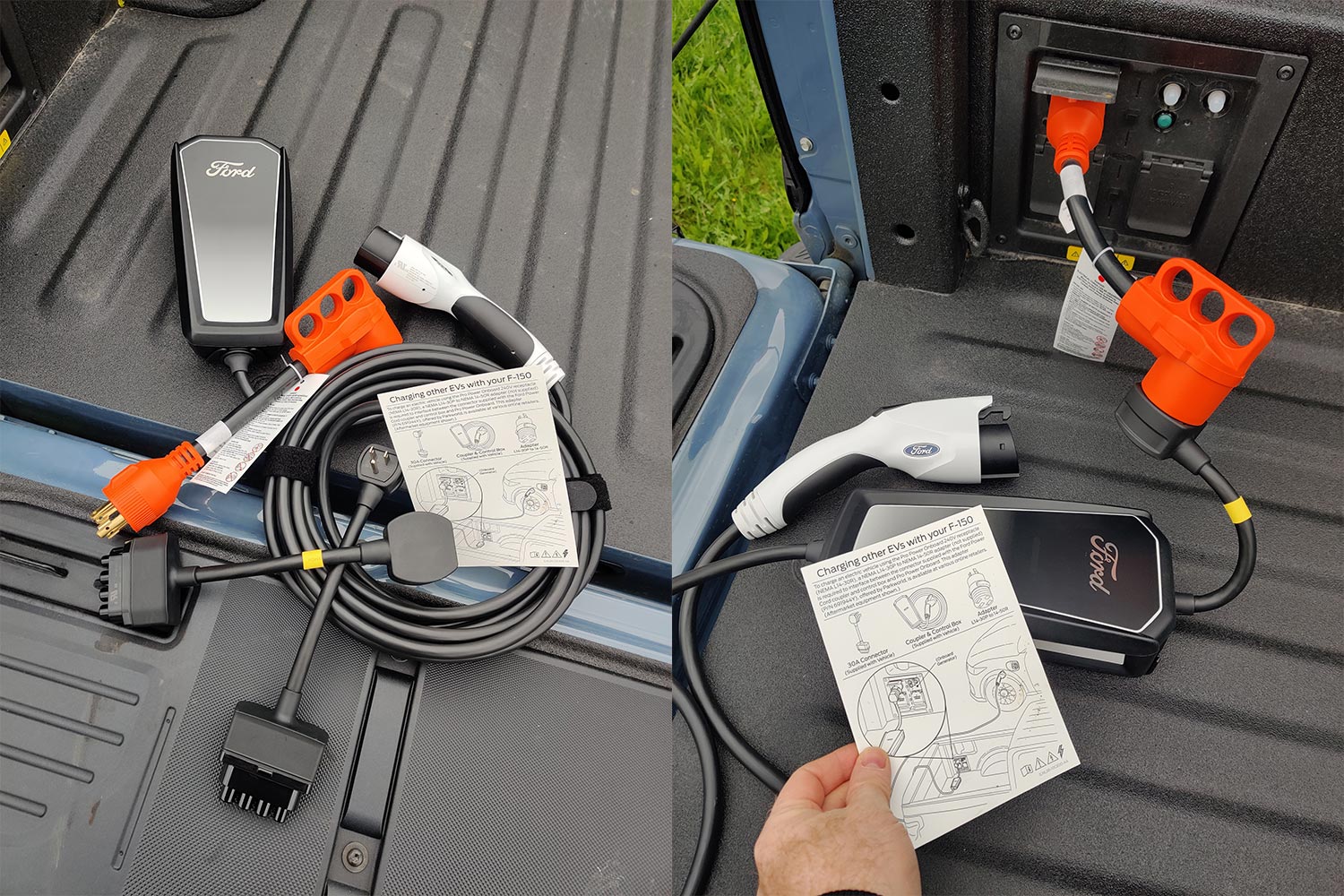
Plug-and-Play Power
For those who might be intimidated by the technical aspects of car-to-car charging, it turns out that the entire process (and the equipment required to make it happen) is surprisingly simple, especially when tapping in the Lightning for the job.
Ford provides a home-charging adapter for the pickup when purchasing the Platinum model, and it comes with a pair of adapters designed to interface with your home’s electrical system if you don’t happen to have a Level 2 charger already installed.
The only missing piece? A third adapter that can bridge the gap between the 240-volt, L14-30 plug in the Lightning’s cargo area, and its charging cable’s NEMA 14-50 connection. Fortunately, this component is readily available online, and costs less than $25.
With the piece of the puzzle in place and the cable connected to both the Ford’s 240-volt plug and the vehicle-in-need’s charge port, it’s time to activate the Pro Power Onboard system. This can be done either by pushing a button beside the plug in the truck bed, or accessing a menu via the pickup’s enormous LCD screen. It’s an incredibly simple process, to the point where I actually switched it on and off several times before realizing I didn’t need to double-up by using both the physical bed switch and the in-cabin touchscreen prompt.
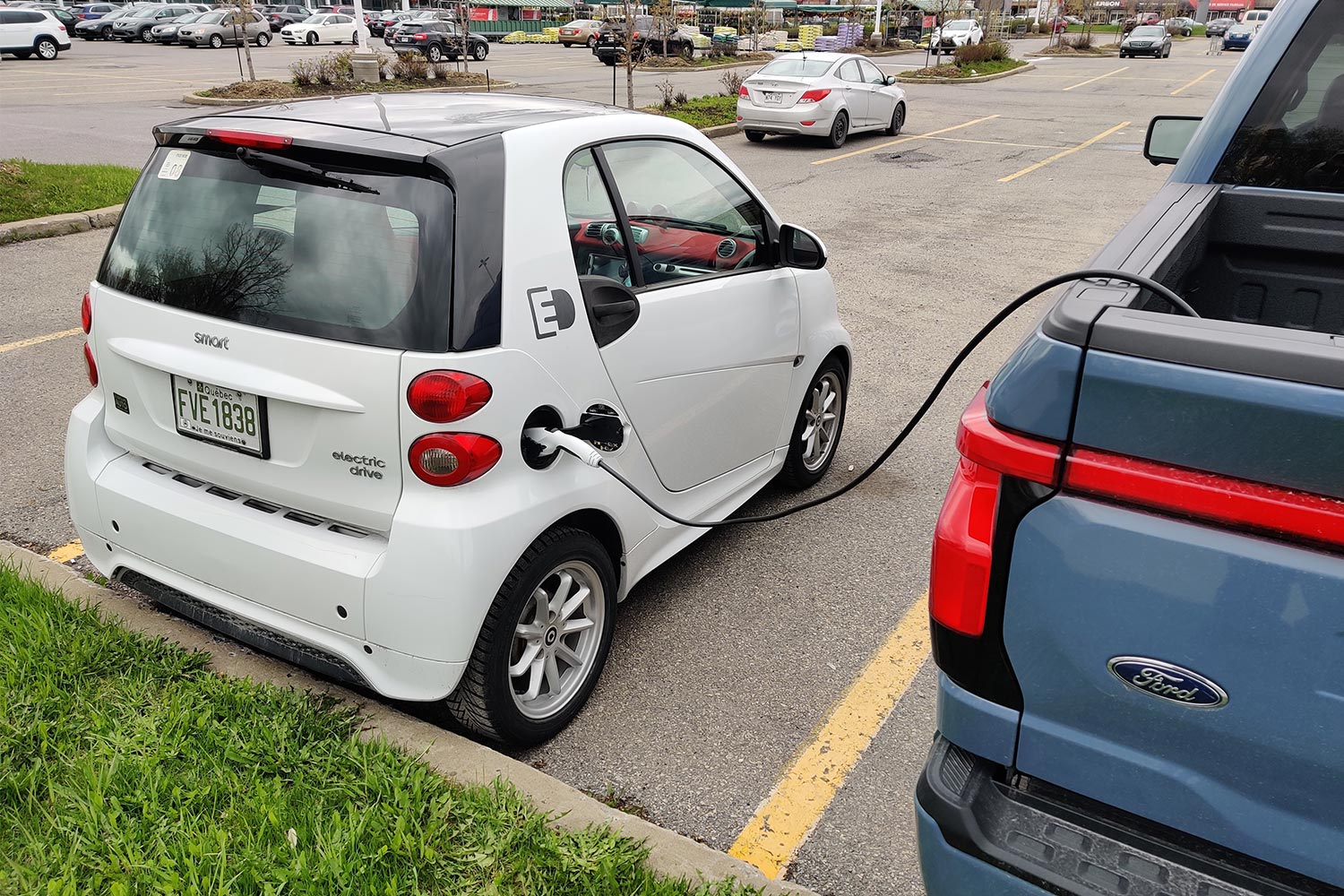
Trouble-Free Vehicle-to-Vehicle Charging
It’s really that basic: Connect the cables, turn on the plug and then settle in to wait out the charge. Past that, there was really very little indication that the Lightning was active, other than the vehicle being switched on and a slight humming sound as the battery discharged through the cable into the Smart car.
The Smart Fortwo Electric Drive is fairly primitive in terms of tracking its state of charge, as there’s just an analog percentage gauge on the dashboard and a basic LED bar graph at the bottom of its tiny, orange-hued gauge cluster to indicate what’s happening in battery land. While it does offer a “time to full” indicator, the rate of electrons flowing into its power pack is represented by the mystery of three bars positioned beside the letters “kW.”
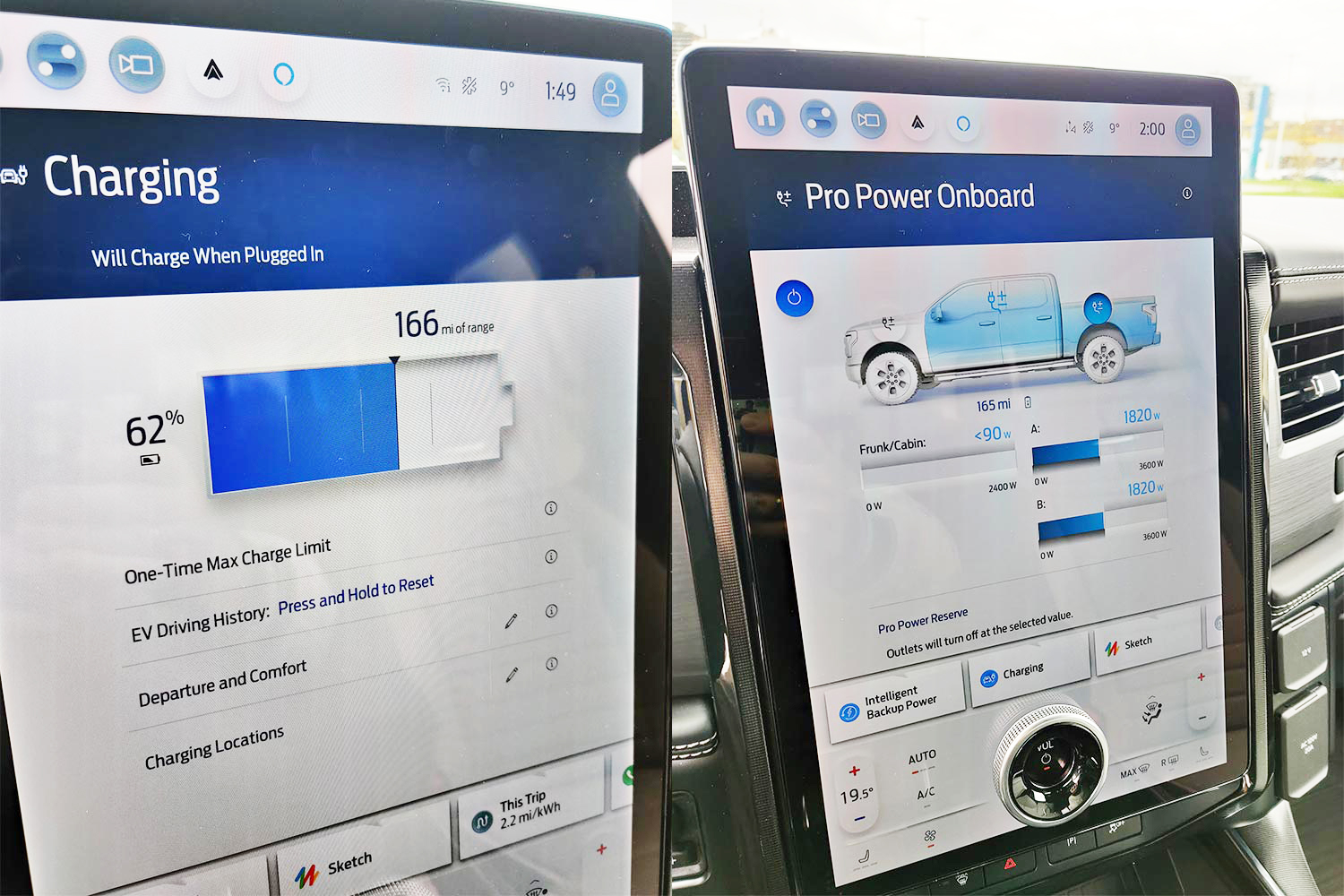
This is a far cry from most modern EVs, which will not only display the exact charge speed in real-time but often also allow owners to reduce or increase the draw from a charger as needed. I turned to the Lightning’s Pro Power Onboard menu to see if I could find a power draw indicator on that side of the charging equation, and things here were a little confusing. The 240-volt outlet combines the two rear power circuits available from the Lightning, which means on the display the power load is shown balanced across both of them, labeled “A” and “B” (with a theoretical max of 7.2 kW due to the 30-amp rating of the provided charge cable).
Adding the two figures together showed me a total peak draw of 3.6 kW, a number that accurately reflected the miniscule max charging capacity offered by the Smart car. This is just a fraction of what a more recent EV will pull from a charger, and it came nowhere near taxing the Pro Power Onboard system. Still, it was effective at its rescue mission: Starting at just over 30% full on the Smart’s battery gauge, an hour attached to the F-150 Lightning nearly doubled its state of charge to 58% (which is in line with how much electricity the older battery can currently handle). The Ford barely even noticed the damage, dropping only 10 miles of total driving range at the end of the charging session — a small price to pay for helping out a potentially stranded fellow EV owner.
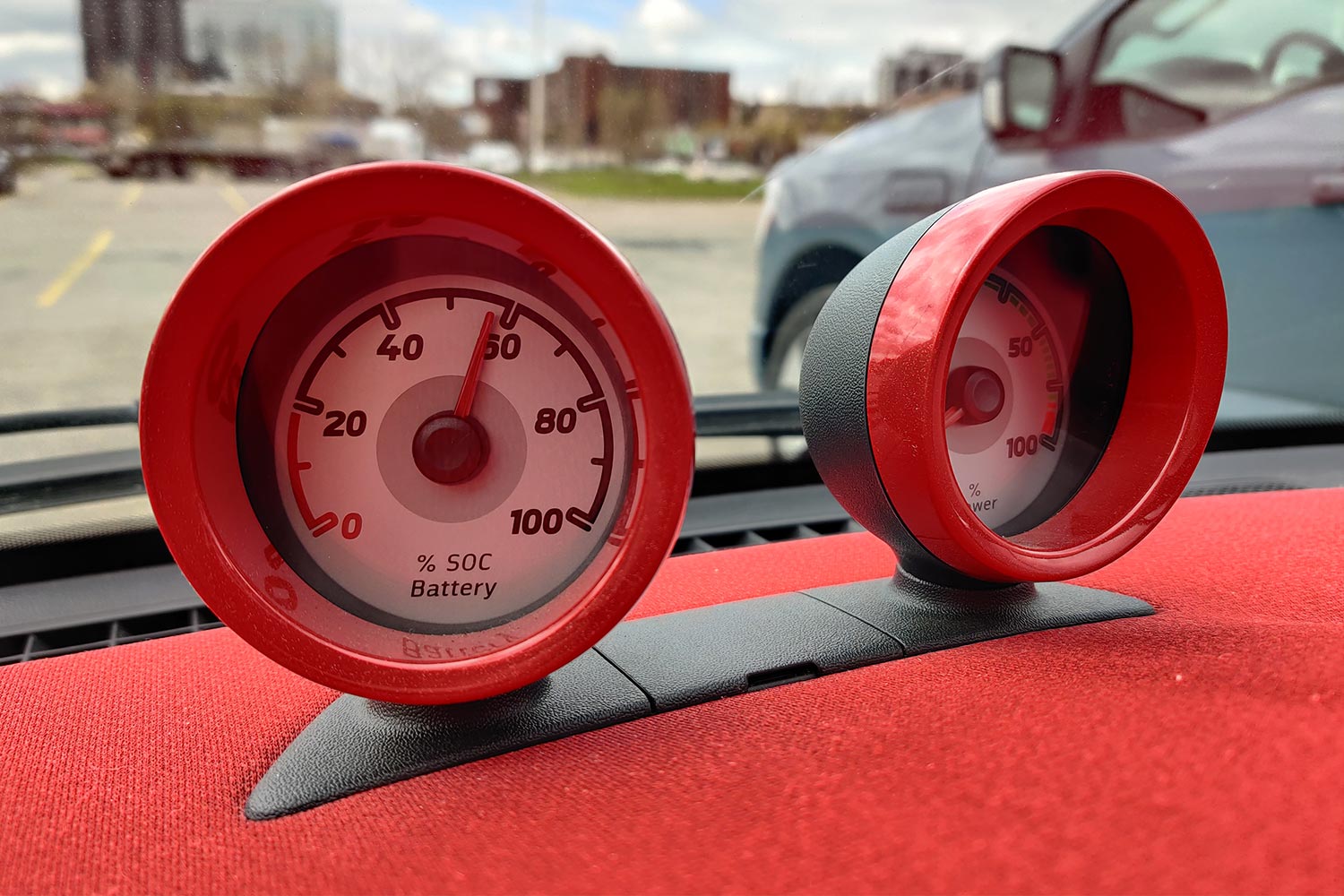
Verdict: Impressive and Easy
Vehicle-to-vehicle charging is much more than a gimmick. The ability to use the Ford F-150 Lightning as a rolling power station significantly adds to its appeal, particularly when considering the over-the-top capacity of its 131-kWh extended range option. The Smart car’s outdated technology limited its ability to take advantage of what the Lightning had to offer, but almost any other EV built in the last five years could easily double the Fortwo’s charge rate, making the pickup an effective, and mobile, stand-in for a Level 2 plug in a moment of need.
For decades, pickup owners have had to dodge calls from friends who “just need to borrow it for a couple of hours” to move furniture, haul away the contents of grandma’s storage locker or pick up some two-by-fours at the hardware store. Once word gets out about the benefits of the Lightning’s easy V2V flex, F-150 Lightning drivers will also have to add late-night pleas from battery-careless buddies to the “do not answer” list.
This article appeared in an InsideHook newsletter. Sign up for free to get more on travel, wellness, style, drinking, and culture.
